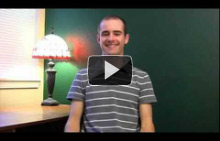Biography of Marie Paulze Lavoisier
Bith Date: 1758
Death Date: 1836
Place of Birth:
Nationality: French
Gender: Female
Occupations: chemist, editor, illustrator, translator
A century before Marie Curie made a place for women in theoretical science, editor, translator, and illustrator Marie Paulze Lavoisier (1758-1836), wife and research partner of chemist Antoine Laurent Lavoisier, surrounded herself with laboratory work. As assistant and colleague of her husband, she became one of chemistry's first female researchers. In addition, she cultivated the arts and welcomed the era's intellectuals to her Paris salon for stimulating conversation.
Born Marie-Anne Pierrette Paulze in 1758, she enjoyed a comfortable lifestyle in Paris, France, as the beautiful, intellectually curious daughter of scholar and nobleman Jacques Paulze, wealthy nephew of the Abb‚ Terray. In 1771, after her mother's death, she left a convent school to become her father's hostess. On her own, she studied chemistry and languages. To avoid an arranged marriage at age 14 to Count d'Amerval, a family friend and unscrupulous fortune-hunter who was 36 years her senior, she agreed to wed 28-year-old Antoine Laurent Lavoisier, a frequent guest at the Paulze house. Her husband, who held a law degree, was a respected geologist and chemist and a member of the French Academy of Science. After his mother made him independently wealthy with a handsome inheritance, he was able to pursue his love of theoretical chemistry and initiate a chemical revolution based on logic and mathematical principles.
The Lavoisiers shared much in common, including the scientific laboratory on the upper floor of the house in Paris that they received as a wedding present. They enjoyed board games and discussions of astronomy, chemistry, and geology. He educated her in the use of balances, burning lenses, and reduction vessels and taught her German and Latin, the language of the scientific community. She took an interest in his refutation of the claims of mesmerists, perusals of hot-air balloons, the causes of contagious disease in cities, and refinements to the metric system. To help her husband at his investigation of the physical nature of fire and heat, she taught herself English and introduced him to American and British articles she translated into French. She also took art lessons from French painter Jacques-Louis David and began illustrating Antoine's articles.
Wife and Lab Partner
Although the marriage produced no children, Marie Lavoisier contented herself by regulating the couple's daily work with a research schedule. As a team, they established modern chemistry by separating its scientific aspects from alchemy and by evolving an updated scientific glossary. They coined the term "oxygen," identified it as an elemental gas, described the oxidation process that changes iron to rust, and analyzed the products of normal human respiration as water and carbon dioxide. In spring 1774, the couple experimented on the calcination of tin and lead in sealed containers and confirmed that the increase in the weight of calcinated metals derived from a combination with air. The results of their meticulous project disproved earlier theories of combustion, which maintained that the element phlogiston was essential to combustion. Most important to science, Antoine formulated the law of conservation of matter, which established that there is no gain or loss of weight in the elements of a chemical reaction, a theory that bound chemistry to physical and mathematical laws.
During these experiments, Marie Lavoisier made notes and compiled research records. For Antoine's scientific papers and monographs, she translated text into Latin and appended commentaries. After conferring with English physicist Joseph Priestley in October 1774, who visited their home and discussed his own laboratory findings, the Lavoisiers examined residue from burning. Subsequently, they disproved the faulty theories of German chemist Georg Ernst Stahl and others about phlogiston. In celebration, Marie burned their erroneous texts to symbolize their worthlessness.
Established the Lavoisier Name for Scientific Discoveries
Credit for the advance to chemistry did not reward the Lavoisiers. On April 1775, Antoine read to the French Academy his groundbreaking treatise, "On the Nature of the Principle Which Combines with Metals during Their Calcination and Increases Their Weight," which he published in 1778. Antoine obtained a government post with the gunpowder commission, which offered the Lavoisiers a home and laboratory at the Royal Arsenal, which remained their home and workplace from 1775 to 1792. In 1777, Antoine lobbied Gustaf III, the king of Sweden, for the Nobel prize in theoretical chemistry and recreated the Lavoisiers' lab experiments with gases and balloons. Nonetheless, Antoine lost out to Priestley and Carl Wilhelm Scheele, both of whom claimed to have discovered oxygen before the experimentations of the Lavoisiers.
Marie Lavoisier obviously weathered the loss of renown for the breakthrough in chemistry that she and Antoine accomplished together. In 1783, they publicized their newly formulated theories of fire, combustion, and oxygen and popularized the scientific law that, in any chemical change, "Nothing is gained, nothing is lost." In 1788, Marie Lavoisier translated the writings of Henry Cavendish and Joseph Priestley and Irish chemist Richard Kirwan's "Essai sur le Phlogistique" [An Essay on Phlogiston] and "De la force des Acides, & de la proportion des Substances qui composens les Sels neutres" [Strength of Acids and the Proportion of Ingredients in Neutral Salts]. Along with her comments and Antoine's section-by-section rebuttal, Kirwin's article on Phlogiston appeared in Annales de Chimie [Annals of Chemistry] in 1792.
Scientific Studies, Writings, and Drawings
Looking to the future of science, Marie Lavoisier welcomed scientists to a salon held in her home. Of these occasions, agriculturist and writer Arthur Young, author of Travels in France During the Year 1787, 1788, and 1789, noted, "Madame Lavoisier, a lively, sensible, scientific lady, had prepared a déjeuné Anglois of tea and coffee, but her conversation on Mr. Kirwan's 'Essay on Phlogiston,' which she is translating from the English, and on other subjects, which a woman of understanding that works with her husband in his laboratory knows how to adorn, was the best repast." Young remarked on her vigor and drive and on her knowledge of prevailing chemical theory, which she obtained from international sources.
For her husband's classic summation, Traité Élémentaire de Chimie [Treatise on the Elements of Chemistry] (1789), the first modern chemistry textbook, she provided original sketches, watercolors, and 13 precise copperplate illustrations to accompany an improved system of scientific nomenclature, which replaced such imprecise phrases as butter of arsenic or sugar of lead. The Lavoisier chemistry text established new definition of "element" and a summation of the 23 elements science had identified up to that time. For each experiment, she engraved schematic drawings equipment and outcomes and labeled parts alphabetically to explain the function of each mechanical element. To mark the sketches that were ready for printing, she initialed them and wrote "Bonne" [good] and signed the completed plates "Paulze Lavoisier sculpsit" [(Mme.) Paulze Lavoisier engraved (it).]
Revolution and Widowhood
During the Reign of Terror that followed the French Revolution, the Lavoisiers were forced out of their home and lab in 1792 after authorities booted Antoine off the gunpowder commission. A year later, revolutionaries halted the work of scientific academies. Presented with an arrest warrant on November 24, 1793, Lavoisier attempted to escape extremists, but they apprehended and tried him at a Jacobin tribunal on charges of immuring Parisians by building a wall around his home and of watering soldiers' tobacco, a muddled reference to experiments on methods of retaining moisture in the leaves.
Marie Lavoisier was orphaned and widowed on May 8, 1794, after members of the Republic guillotined her father and husband for treason. An old enemy, revolutionary Jean-Paul Marat, who bore a grudge against Antoine for rejecting him for membership in the Academy of Sciences, blamed the two men and 26 alleged confederates for enriching themselves at the public's expense through the Ferme-Generale, a private tax collection company. In the face of Marat's persecutions based on ridiculous accusations that their wall cut off air supply to Paris, Marie fled France and served 65 days in the Bastille, the infamous Paris prison. Penniless after the confiscation of her land, she came into the care of a former servant.
Life without Antoine
Fortunately for science, within the year, the Republic restored Marie Lavoisier's estate and the confiscated scientific library, which she intended to keep in print. She edited her husband's beginnings on chapters one, two, and four of a projected eight-volume Mémoires de Chimie [Memoirs of Chemistry]. She and a colleague edited the notes in 1796, but parted company after a disagreement. Alone, Marie published the work in two volumes along with her original introduction. In 1805, she issued free copies to French scientists.
That same year, Marie Lavoisier spurned the repeated proposals of chemical magnate Pierre Samuel Dupont de Nemours and gave her attention to a long-time visitor to her salon, expatriate inventor Benjamin Thompson, Count Rumford, the American-Bavarian military adviser, founder of the Royal Institution of Great Britain, and designer of a kitchen range. After four years of friendship, she married Thompson, but chose to retain Antoine's surname. While they traveled Europe, their stormy, mismatched union produced none of the contentment and challenge of her 18 years with Antoine. She is reported to have ruined his flower collection with boiling water after quarreling over his seizure of her money and domination of her activities. Four years later, Rumford and Lavoisier divorced.
Madame Lavoisier gave up scientific experimentation and for a quarter century devoted herself to business and philanthropy until her death in 1836. She left neither diary nor autobiography to clarify her role in Antoine's laboratory experiments or to establish her contribution to chemistry. Remaining of her personal life are a self-portrait that she executed in her teens, her portrait of American scientist and statesman Benjamin Franklin, and an oil painting by Jacques-Louis David showing a neat, sensibly dressed young woman with a cascade of soft curls. In the scenario, she leans companionably on her husband's shoulder before a table spread with their experiments.
Modern biography is at a loss to determine whether Marie Lavoisier was a true scientist overlooked by 19th-century gender discrimination or merely the secretary, translator, and publisher of her husband's remarkable discoveries. In 2000, scientists Carl Djerassi and Roald Hoffman, a Nobel-Prize winner in chemistry, reprised the partnerships of the famed Lavoisiers in a witty history play, Oxygen, published the following year. The text comments on the selection of Nobel committee's selection of scientists to honor, the influence of translation method on scientific research, childlessness, and the position of women in science, which was historically overlooked when the female researcher partnered with her mate.
Further Reading
- Creations of Fire: Chemistry's Lively History from Alchemy to the Atomic Age, Perseus Books, 1995.
- Great Thinkers of the Western World, HarperCollins, 1992.
- The Hutchinson Encyclopedia of Biography, ed. by C. S. Nicholls, 1996.
- Imaging a Career in Science: The Iconography of Antoine Laurent Lavoisier, Science History Publications, 2001.
- Lavoisier, Chemist, Biologist, Economist, University of Pennsylvania, 1996.
- Notable Women Scientists, Gale Group, 2000.
- Oxygen, John Wiley & Sons, 2001.
- Women's World, ed. by Irene Franck and David Brownstone, HarperPerennial, 1995.
- World of Scientific Discovery, 2nd ed. Gale Group, 1999.
- Ambix, 1989.
- American Scientist, January-February 1996; January-February 2002.
- Bulletin for the History of Chemistry, No. 24, 1999
- Chemical Educator, Vol. 3, Issue 5, 1998.
- Chemistry and Industry, July 24, 2000; September 3, 2001.
- Chymia, 1953.
- Education in Chemistry, November 1985.
- Journal of Chemical Education, 1975.
- Natural History, December 1998.
- "The Age of Revolution," http://teachers.springisd.org/johnp/ wch20scientificrevolution.html (January 16, 2002).
- "Antoine Laurent de Lavoisier," http://histoirechimie. multimania.com/Lien/LAVOISIER.htm (January 16, 2002).
- Biography Resource Center, http://galenet.galegroup.com/ servlet/BioRC (January 16, 2002).
- "The Man Huntington Loved to Hate," http://www.lihistory.com/ 4/hs412a.htm (January 16, 2002).
- "Women in Science," http://www1.umn.edu/ships/ gender/giese.htm (January 16, 2002).




